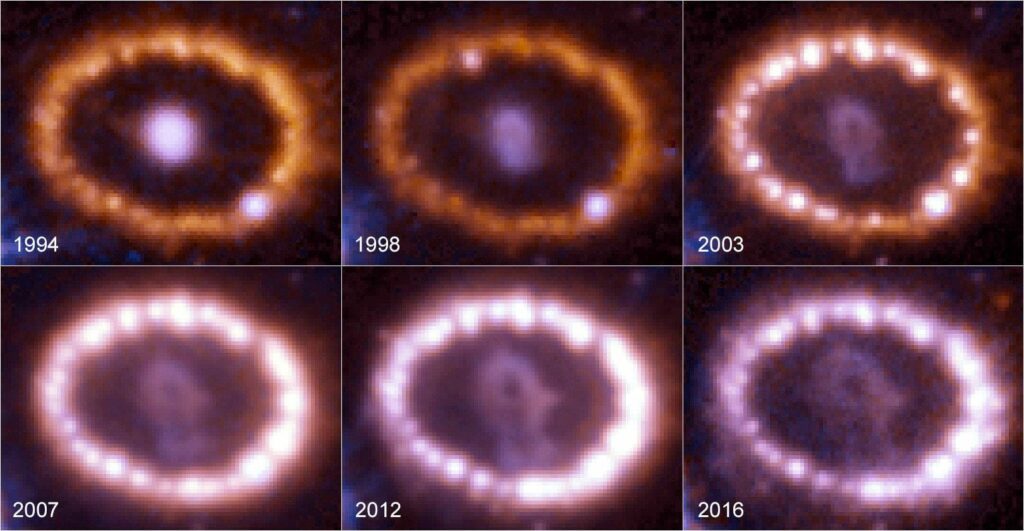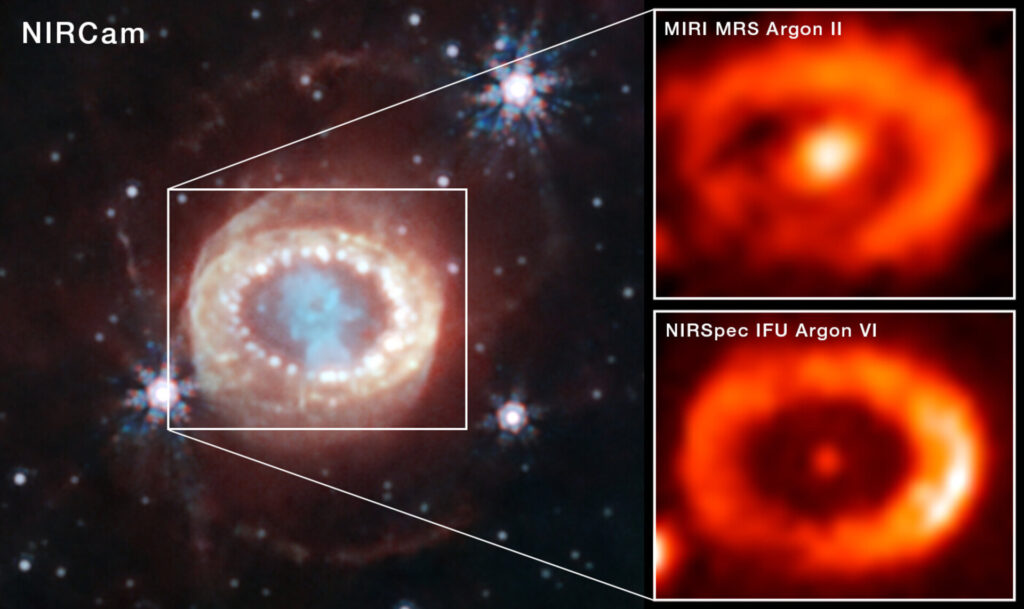The James Webb Space Telescope (JWST) has found traces of neutron star emission in the supernova remnant SN 1987A. This is an important step towards a better understanding of the mechanism of formation of such objects.
The closest supernova in 400 years
SN 1987A flared up in 1987 in the Large Magellanic Cloud, a dwarf galaxy located 160 thousand light-years from the Milky Way. Due to its proximity, it became the first supernova observed in the night sky with the naked eye since 1604.

The source of the supernova was a collapsed star. About two hours before the flare began, three observatories around the world observed a neutrino burst lasting several seconds. This provided important clues to clarify the mechanism of collapse of massive luminaries.
According to theoretical models, supernovae of this type should form a neutron star or a black hole. Observations of much older supernova remnants (such as the Crab Nebula) also confirm that neutron stars are present in many of them. So for many years, scientists have been studying the remainder of SN 1987A, trying to answer the question of what exactly caused its explosion. They managed to find some traces indicating the presence of a neutron star — but until recently there was no direct evidence.
Hidden Neutron Star
Everything changed thanks to JWST. SN 1987A became one of the first objects to be studied by the telescope after it began observations. Spectral analysis of the data collected by the medium-resolution spectrograph showed the presence of ionized argon in the ejected material surrounding the place where the dead star was located.

Subsequent observations at shorter wavelengths confirmed the strong ionization of chemical elements in SN 1987A. For example, argon atoms are five times ionized (that is, they have lost five out of 18 electrons). The formation of such ions requires high-energy photons, which must come from somewhere. This means that there is a source of high-energy radiation in the center of the SN 1987A remnant. After studying all the available options, the scientists concluded that it could only be a newborn neutron star.
Additional observations of SN 1987A are planned this year using JWST and ground-based telescopes. The research team hopes that they will provide a clearer picture of exact events at the heart of the supernova remnant.
According to https://www.esa.int
Follow us on Twitter to get the most interesting space news in time
https://twitter.comne/ust_magazine


